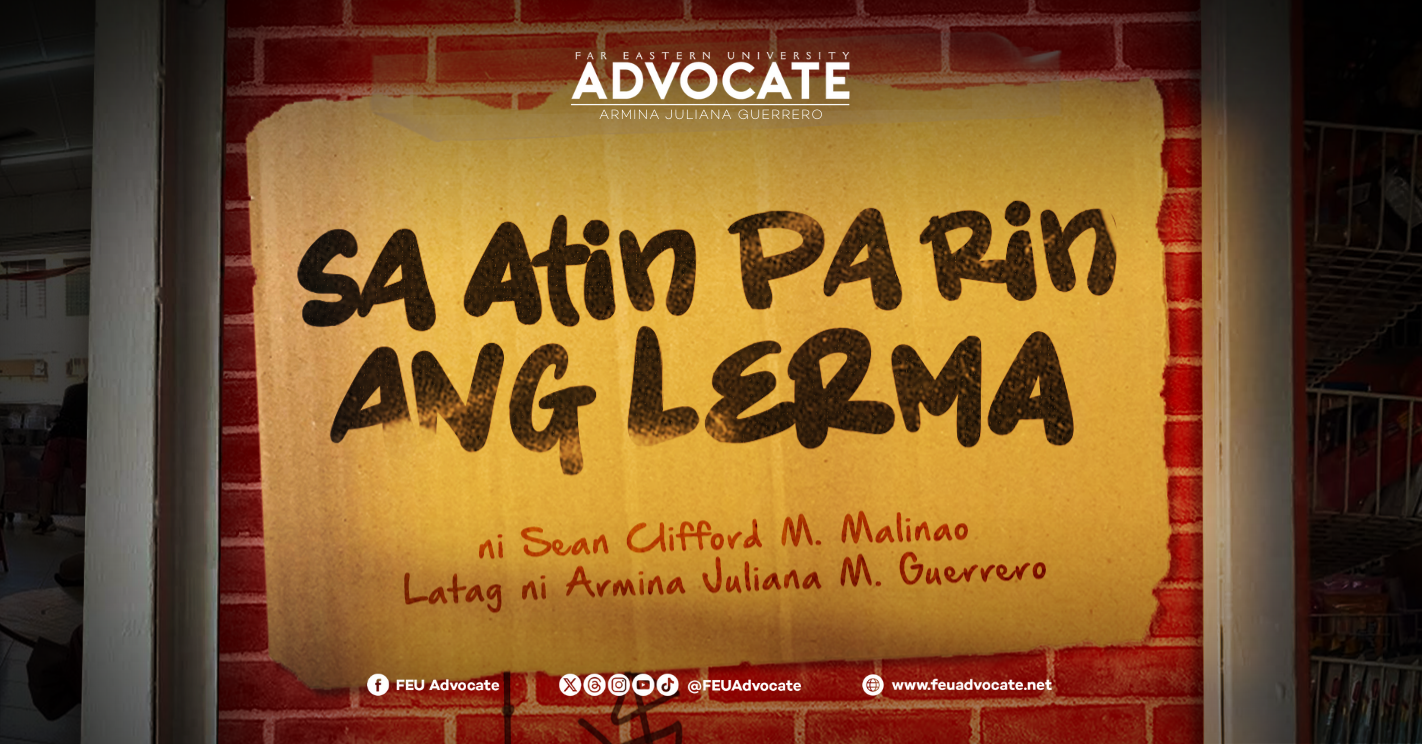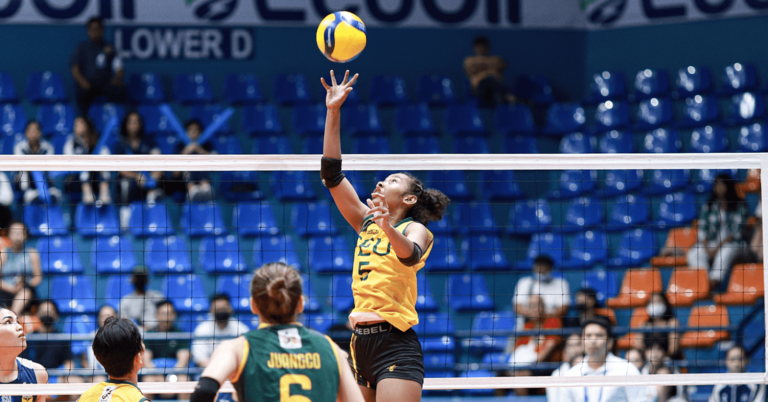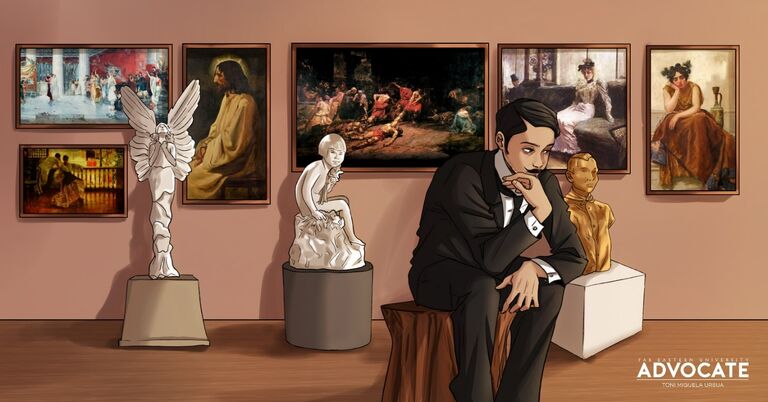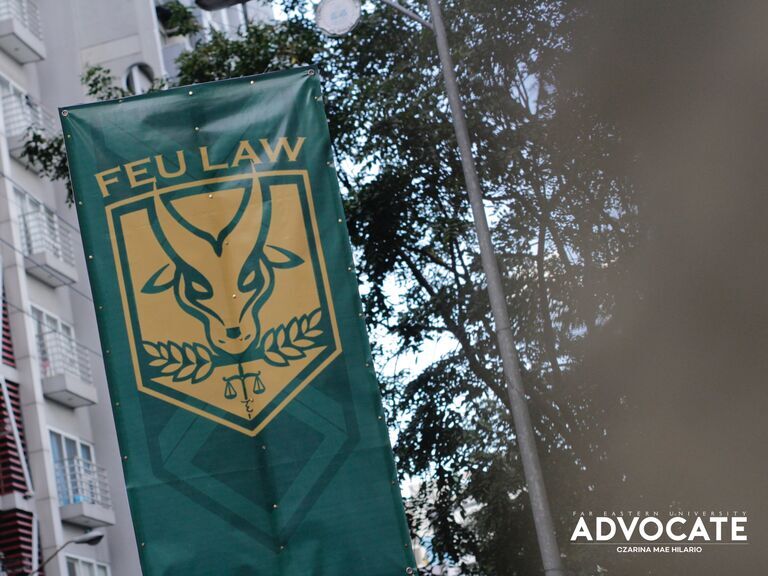
All souls relieved, all goals remembered
- November 03, 2024 19:37
FEU Advocate
May 03, 2024 08:53
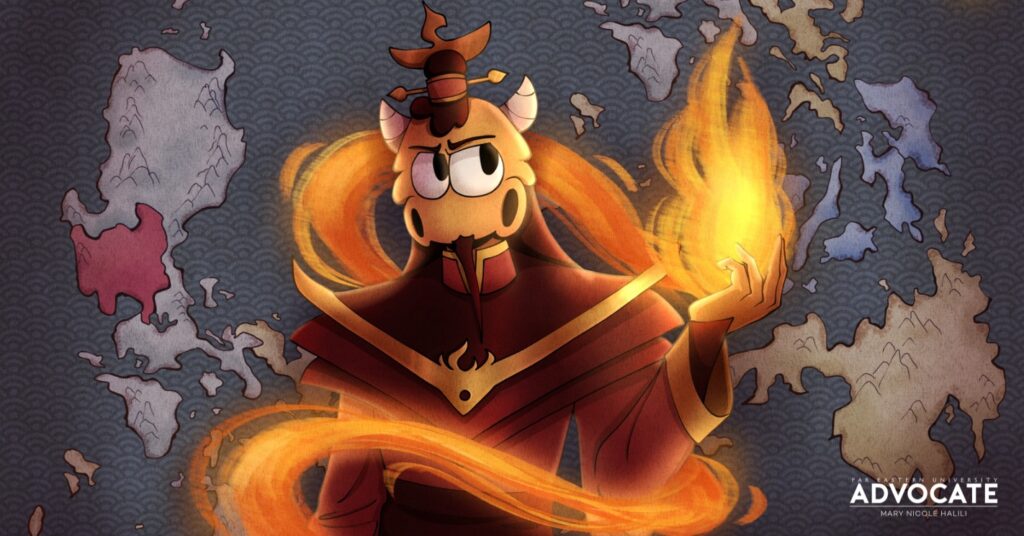
By Valerie Rose V. Ferido and Angelo P. Copon
Avatar: The Last Airbender serves as a constant reminder that all it takes is one power-hungry tyrant to undermine social order and cultivate a culture of corruption, injustices, and impunity.
For many of us, childhood meant watching Avatar: The Last Airbender (ATLA) and growing up with Aang, a 12-year-old kid who must bear the heavy burden of saving the world.
The 2005 Nickelodeon original animated series is set in a universe inhabited by elemental benders peacefully coexisting in four states: Fire Nation, Air Nomads, Water Tribes, and Earth Kingdom. However, as the opening sequence dreadfully narrates, "Everything changed when the Fire Nation attacked."
Too shallow as it might seem for a cartoon to be overanalyzed, the glaring parallels and symbolisms are simply hard to ignore. More than just entertainment that kept us glued in front of our TV screens as kids, the events that happened in ATLA hold significant meanings in today’s society.
Hidden beneath fantasy elements of Aang's world are political undertones exploring darker themes–from the costs of violent conflicts to corrupt leaders and their self-serving governments. For Filipino viewers, Avatar: The Last Airbender is essentially an allegory of the nation’s current socio-political landscape.
Warning: the content below contains major spoilers for Nickelodeon's cartoon series, Avatar: The Last Airbender.
Aang, the central character and the last airbender, had the weight of the world on his shoulders after being frozen for 100 years after accidentally escaping the genocide of the Air Nomads by the Fire Nation. In the time he spent frozen in ice before being awoken by Water Tribe siblings Katara and Sokka, the Fire Nation attacked the three other nations; wiped out the Air Nomad population, and hunted down waterbenders.
Many generations have passed while Aang was frozen in time, but the Fire Nation still continued to brutally ablaze and rule the world. Just like Katara says in every opening sequence, “And although his airbending skills are great, he has a lot to learn before he's ready to save anyone. But I believe Aang can save the world.”
Although this makes for a great cartoon action-adventure, Aang is a mere reflection of child labor when looking through a Philippine lens.
Out of the 30 million population of Filipinos aged five to 17 years old, about 2.8 percent or 872,000 children are working. You can find these children on the streets selling food, on roads giving fast car washes for a few coins, or even around cities collecting scraps to trade in for money. Some children also work in farms, plantations, mines, and factories–places children should not be. These children should be in school enjoying their childhood, but the Philippines’ poverty and homelessness rates are factors as to why child labor is still a pressing issue in the country.
Just like Aang, these children have sacrifices and hardships they have to make for the sake of survival. Despite having legal frameworks in the country regarding child labor, the rate of working children continues to increase due to the worsening situation.
In the show, the Fire Nation’s government can be described as an absolute monarchy as the nation is led by Fire Lord Ozai, with Zuko and Azula competing to be next in the throne. For most of the show, it was Azula who was being trained to follow Lord Ozai’s footsteps due to Zuko being banished from the Fire Nation.
Lord Ozai kept a close eye on Azula and made her a mini Ozai in terms of skill and political concepts, just like the tradition of countless political dynasties instilled in Philippine politics and government. The Marcoses, Dutertes, and Villars, just to name a few, make the country look just like the Fire Nation burning down in flames of nepotism. Hopes of progress are dying embers as controversial political figures breed and raise trapos in their bloodline to strengthen their influence.
Yes, the Fire Nation follows an absolute monarchy government, as opposed to the Philippines’ democratic institutions, but it can still be an allegory for political dynasties in the country, which is more common than it should be.
Political dynasties in the country run a variety of governments from local to nationwide, where families train their children to be next in line to lead their respective governments. Just like Fire Lord Ozai, for the sake of greed and power.
The role of the Avatar is rotated throughout the four nations called the Avatar Cycle. Specifically, when the Avatar dies, the Avatar spirit is reborn through the cycle of fire, air, water, and earth. With Aang being an airbender and with the Fire Nation under the assumption that the whole Air Nomad population has passed, the Fire Nation then targeted waterbenders since they were next in line for the Avatar cycle.
The Fire Nation hunted down all waterbenders from all tribes: Northern, Southern, and Foggy Swamp in fear that one of them could be the next Avatar, even if in reality they were innocent. In worst cases, Fire Nation soldiers would kill these waterbenders, just as they did to Katara and Sokka’s mother. Due to this, Katara had to live with her waterbending in secret and was the only waterbender in the Southern tribe.
Unjust arrest, red-tagging, and extrajudicial killings? Is this the Fire Nation’s act or the Philippine War on Drugs? The Philippine war on drugs was more than just what it sounds like. Local governments imposed drug war policies during Rodrigo Duterte’s presidency, which favored violent and inhumane ways to treat victims of drug use. Duterte’s drug war and the culture of police misconduct it perpetuated killed 17-year-old Kian delos Santos in 2017.
Instead of proper rehabilitation and care, drug users were arrested or even killed. Over 12,000 Filipinos have died due to the drug war. In some cases, innocent people’s lives were put at stake as well–just like the people of the Water Tribes.
Political propaganda was a common theme seen in Avatar: The Last Airbender. From the Dai Li secret service in the enclosed Earth Kingdom city, Ba Sing Se, to the Fire Nation’s imperialist campaign, propaganda was used as a tactic force when it came to governing bodies in the world of Avatar.
The Dai Li used brainwashing to slowly cover up the effects of the Hundred Year War in Ba Sing Se, and the Fire Nation utilized propaganda to instill ideals and justify their call for war. In fact, the Fire Nation went as far as to teach their children that Fire Lord Sozin battled Air Nomads' nonexistent military to glorify their campaign. Especially since Fire Lord Ozai’s main goal was to unify all nations and be the ruler of the whole world in the guise of unity and prosperity.
In the Philippine context, this is seen through the use of propaganda during election campaign season, especially with the utilization of misinformation, cash incentives, and ego-glorifying campaign jingles. Gold, anyone? Historical distortion of the Philippines can also fall under this, given that the Marcoses were able to reclaim the Malacañang through their disinformation network.
Due to its diverse and dense population, the Earth Kingdom was a massive thorn in Fire Nation's ambition for fascist rule. Unlike the stronghold of Ba Sing Se, earthbender settlements in the outskirts do not enjoy the same defense machinery. These small communities are easily subjugated and exploited by Fire Nation's military forces and as a precautionary measure banned from practicing earthbending.
Any form of resistance results in abrupt arrest and forced labor. Prisoners are kept in offshore metal prisons which leaves them no resources to practice their bending arts. Staunch members of the Filipino civil society suffer a similar fate to Fire Nation's political prisoners. For activists and human rights defenders, these incidents allude to the horrifying realities they must confront–warrantless arrests and enforced disappearances.
Disadvantaged groups and members of the progressive left are as good as defenseless against state violence, especially with the law weaponized against them. In fact, the Philippines is listed among the most dangerous countries for journalists. Despite the overwhelming international criticisms, the Anti-Terror Law remains in legislation–arming state forces with the license to terrorize civil society.
For Earth Kingdom citizens who have suffered through decades of oppression and loss, liberty was left in the ruins of war. As societal ills continued to plague nations while clamors of refugees were tuned out by battle cries, Jet, a teenage refugee-turned-rebel from the Earth Kingdom, felt the need to demand justice regardless of the means. While Jet's Freedom Fighters were initially antagonized due to their seemingly extremist methods, we cannot simply discount the roots of their struggle.
In the present times, Filipino revolutionaries pick up arms in their political struggle for justice, democracy, and liberty. While their ideals and means remain subjects of controversy, it is essential to remember that their goals exist in the same spectrum as peaceful dissent: to free the people from the tolls of economic instability, corruption, and impunity.
Airbenders are known for their peaceful nature and their minimalist ideals. If not committed to nomadism, they form humble settlements in major temples located atop mountain ranges or remote islands– areas only accessible with flying bison. With their scarce population, Air Nomads live in tight-knit communities and are somewhat detached from the chaos and violence brewing outside their temples. This was until Fire Lord Sozin ordered their genocide, prompting the Hundred Year War.
For Air Nomads, it was genocide. For the Indigenous Peoples (IP) of the Philippines, most especially the Lumads of Mindanao, it was extrajudicial killings and widespread displacement forcing them out of their ancestral lands. As their communities are militarized from the state's uncompromising suspicion of IP involvement with communist insurgent groups, they become easy targets of indiscriminate killings and torture.
If not caught in the tensions between state forces and non-state armed groups, tribes are forced to abandon their homes to give way to industrial developments. Boracay's Ati community faces an ongoing land dispute versus developers, following the cancellation of their 2018 Certificates of Land Ownership. The soils they worked hard to cultivate are usurped in favor of accommodating Boracay's ever-growing tourist industry.
Just like the Air Nomads, gone are the days of peace for IPs as they are forced into a life of fear–fear of dying in injustice, losing their families, and failing to protect the generations to come.
Despite all of the challenges that Aang and the Gaang faced in the show, they still got a good ending that they deserved. That is one thing that the world of Avatar has an edge over the Philippines, they addressed, overcame, and solved these challenges.
But this doesn’t mean that things will never change for the Philippines. Change starts with calling out what needs to be addressed. Calling things out can start from anywhere–even from overanalyzing a kids' TV show.
Maria Akita R. Clave, a second-year Psychology student, emphasizes the importance of arousing, organizing, and mobilizing the student body in confronting issues within and outside the walls of the university.
"[We need to] Arouse the other students that there is a problem within the student body, that students like us are being oppressed," Clave recalls the shared frustration of Tamaraws as they face tuition fee hikes and student repression. Clave believed that students must be equally aware of non-academic issues as well.
"[We need to] Organize ourselves as a collective because change cannot be achieved by one individual. Like how Aang received help from the different nations to defeat the imperialist Firelord, a collective of students can go a long way to make a change. [We need to] Mobilize, as it is important to move towards the goal of the students. To mobilize is to move with the student collective to reach that goal," Clave added.
Rizbon Isaiah Salazar, a second-year Communications student, shared his own insights and compared the Fire Nation to China regarding the tension circulating around the West Philippine Sea.
“The Fire Nation heavily mirrors the oppressive and superior complex of China, while the Philippines mirrors the diverse and colorful cultures of the Water, Earth, and Air Nation who are struggling to fight against a more dangerous nation. Just like Aang needs to master all four elements to defeat the Fire Nation, the Philippines needs to leverage its alliances and diplomatic ties with other nations to counter China's negative influence,” Salazar stated.
Clave and Salazar are two Tam-grown examples of Real World Avatars, who strive to make changes in our country for the betterment of the Filipino wellbeing. Even as students, it is important for them to take action.
“If I were the Avatar, I would help the world by reversing all the major damages that climate change has brought on us. I wouldn't just focus on one element, but use my mastery over all four to create a holistic solution,” Salazar shared on how he would use the four elements as an Avatar to address climate change.
Just like a quote from the last airbender himself, “When we hit our lowest point, we are open to the greatest change.” As students, we have the power to voice out what is wrong and to help and amplify the voices of those who need justice. In our world, we are all Avatars, and it is up to us how to use that power for good, for the country, and for our future.
(Illustration by Mary Nicole Halili/FEU Advocate)


